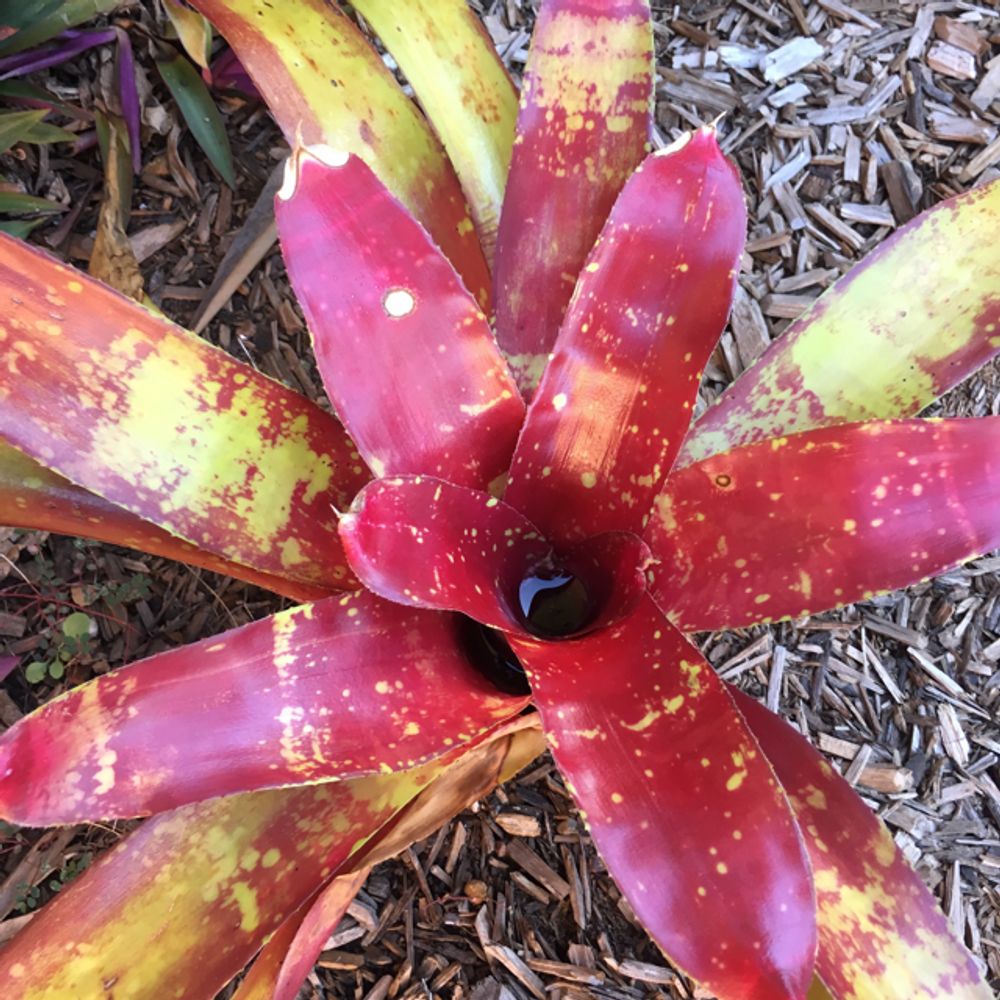Bromeliads
(Bromeliaceae)

Description
The Bromeliaceae (the bromeliads) are a family of monocot flowering plants of 51 genera and around 3475 known species native mainly to the tropical Americas, with a few species found in the American subtropics and one in tropical west Africa, Pitcairnia feliciana. They are among the basal families within the Poales and are unique because they are the only family within the order that has septal nectaries and inferior ovaries. These inferior ovaries characterize the Bromelioideae, a subfamily of the Bromeliaceae. The family includes both epiphytes, such as Spanish moss (Tillandsia usneoides), and terrestrial species, such as the pineapple (Ananas comosus). Many bromeliads are able to store water in a structure formed by their tightly-overlapping leaf bases. However, the family is diverse enough to include the tank bromeliads, grey-leaved epiphyte Tillandsia species that gather water only from leaf structures called trichomes, and a large number of desert-dwelling succulents. The largest bromeliad is Puya raimondii, which reaches 3–4 m tall in vegetative growth with a flower spike 9–10 m tall, and the smallest is Spanish moss. Bromeliads are plants that are adapted to various climates. Foliage takes different shapes, from needle-thin to broad and flat, symmetrical to irregular, spiky to soft. The foliage, which usually grows in a rosette, is widely patterned and colored. Leaf colors range from maroon, through shades of green, to gold. Varieties may have leaves with red, yellow, white and cream variations. Others may be spotted with purple, red, or cream, while others have different colors on the tops and bottoms of the leaves. The inflorescences produced by bromeliads are also regarded as considerably more diverse than any other plant family. Some flower spikes may reach 10 meters tall, while others only measure 2–3 mm across. Upright stalks may be branched or simple with spikes retaining their color from two weeks up to 12 months, depending on species. In some species, the flower remains unseen, growing deep in the base of the plants. Root systems vary according to plant type. Terrestrial bromeliad species have complex root systems that gather water and nutrients, while epiphytic bromeliads only grow hard, wiry roots to attach themselves to trees and rocks. Some bromeliads are faintly scented, while others are heavily perfumed. Blooms from the species Tillandsia cyanea have a fragrance resembling that of clove spice. One study found 175,000 bromeliads per hectare (2.5 acres) in one forest; that many bromeliads can sequester 50,000 liters (more than 13,000 gallons) of water. A wide variety of organisms takes advantage of the pools of water trapped by bromeliads. A study of 209 plants from the Ecuadorianlowlands identified 11,219 animals, representing more than 300 distinct species, many of which are found only on bromeliads. Examples include some species of ostracods, small salamanders about 2.5 cm (1 in) in length, and tree frogs. Jamaican bromeliads are home to Metopaulias depressus, a reddish-brown crab 2 cm (0.8 in) across, which has evolved social behavior to protect its young from predation by Diceratobasis macrogaster, a species of damselfly whose larvae live in bromeliads. Some bromeliads even form homes for other species of bromeliads.
Taxonomic tree:







